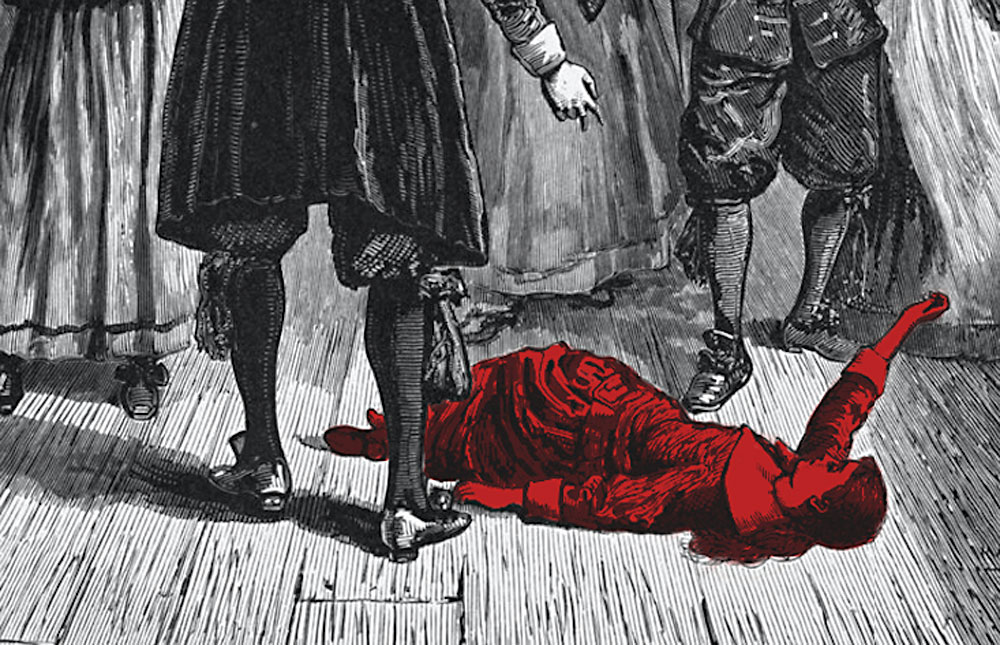Joan of Arc, also known as Jeanne d’Arc, is one of the most iconic figures in history, celebrated for her courage, piety, and extraordinary life. Her story resonates deeply within the feminist movement, offering a rich narrative that challenges traditional gender roles and highlights the complexities of power, faith, and social norms. This essay explores the real story of Joan of Arc from a feminist viewpoint, delving into her accomplishments, her supposed crimes, her perception in her time, and her enduring impact on modern society and the role of women.
Early Life and Historical Context
A World in Turmoil
Joan of Arc was born around 1412 in Domrémy, a small village in northeastern France, during a period of immense turmoil and conflict. The Hundred Years’ War between France and England, which began in 1337, had left much of France in chaos. The war was not just a military struggle but also a complex political conflict involving territorial claims and the legitimacy of rulers.
Joan grew up in a peasant family, living a life that was typical for her class but extraordinary in the context of the era’s upheaval. Her village was situated in a region loyal to the French crown, but it was surrounded by territories controlled by the Burgundians, allies of the English. This precarious environment shaped Joan’s early experiences and her emerging sense of national identity.
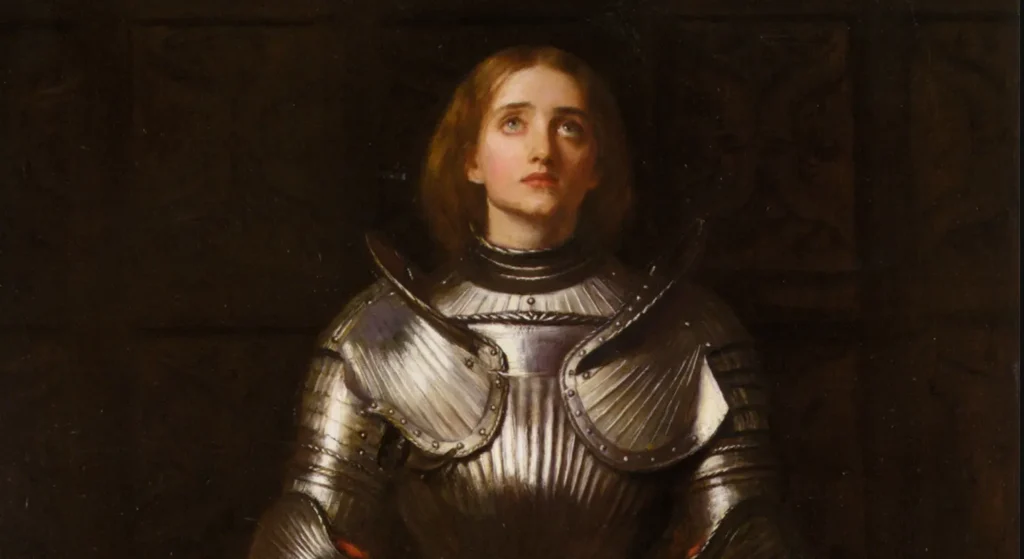
Mystical Visions and Divine Mission
From a young age, Joan experienced visions and heard voices she believed were sent by God. These visions, which she identified as Saint Michael, Saint Catherine, and Saint Margaret, played a crucial role in her life, guiding her actions and providing her with a sense of divine mission. At the age of 13, Joan began to understand her calling: to support Charles VII, the Dauphin of France, and help reclaim French territories from English control.
Joan’s conviction in her divine mission was unwavering. Despite her young age and the social constraints placed on women, she was determined to act on the instructions she believed she had received from the saints. This sense of purpose and divine endorsement set her on a path that would lead to extraordinary achievements and profound challenges.
Joan’s Military Accomplishments
The Siege of Orléans
Joan of Arc’s military accomplishments are central to her legacy. In 1429, at the age of 17, she convinced Charles VII to allow her to lead an army to lift the siege of Orléans, a strategic stronghold under English attack. This was no small feat; convincing a king to place his faith in an untrained peasant girl required extraordinary charisma, determination, and divine conviction.
The Siege of Orléans was a turning point in the Hundred Years’ War. Joan’s leadership and inspirational presence turned the tide of the siege, resulting in a decisive French victory. Her strategy and courage in battle earned her the respect and admiration of her troops. This triumph revitalized the French cause and bolstered the morale of the nation.

The Coronation of Charles VII
Following the victory at Orléans, Joan continued to lead French forces in a series of successful campaigns. Her most significant achievement came with the coronation of Charles VII at Reims. The path to Reims was fraught with challenges, but Joan’s determination and strategic acumen ensured that the Dauphin reached the city safely.
The coronation was not merely a symbolic victory; it legitimized Charles VII’s claim to the French throne and marked a significant step towards the eventual French victory in the Hundred Years’ War. Joan’s role in this process was pivotal, showcasing her ability to transcend traditional gender roles and exert significant influence in a male-dominated society.
Gender and Military Leadership
Joan’s success on the battlefield challenged contemporary gender norms and expectations. In medieval Europe, women were largely confined to domestic roles and had limited opportunities for leadership. Joan’s emergence as a military leader was both unprecedented and controversial. Her ability to inspire and lead men into battle highlighted her exceptional qualities and forced a reevaluation of women’s capabilities.
Joan’s decision to wear male military attire was a practical choice for a commander in the field, but it also became a symbol of her defiance against traditional gender roles. Her clothing allowed her to move freely and command respect in a male-dominated environment. However, it also became a focal point of her trial and eventual execution, illustrating the societal anxieties about gender and power.

Perception and Trial
The Complex Reception of Joan of Arc
Joan of Arc’s ascent to power and influence was met with mixed reactions. To many, she was a divine instrument, a savior of France chosen by God. Her victories and the coronation of Charles VII were seen as proof of her divine mission. She became a symbol of hope and inspiration for the French people.
However, Joan also faced significant opposition. The English and their allies, the Burgundians, viewed her as a threat to their control over France. Her claim to divine guidance and her success on the battlefield challenged their authority and legitimacy. For the English, Joan was not a saint but a heretic and a witch whose influence needed to be eradicated.
Capture and Trial
In 1430, Joan was captured by the Burgundians during a skirmish near Compiègne. She was handed over to the English, who were determined to discredit and eliminate her. Joan was put on trial by an ecclesiastical court in Rouen, a trial that was as much a political and religious maneuver as it was a legal proceeding.
The charges against Joan included heresy, witchcraft, and cross-dressing. The trial was marked by numerous irregularities and violations of legal procedures. Joan’s enemies sought to undermine her credibility and legitimacy by focusing on her unconventional behavior and her claim to divine inspiration.
Gender and Heresy
Joan’s decision to wear male attire became a central issue in her trial. Her clothing, a practical choice for her role and protection, was used to undermine her character and legitimacy. This focus on her appearance reveals the extent to which control over women’s bodies and appearances was, and still is, a mechanism of maintaining patriarchal power.
The charge of heresy was particularly significant. Joan’s claim to direct communication with God and her interpretation of divine will challenged the established religious authorities. Her trial and execution can be seen as an attempt to reassert control over religious and social norms, punishing a woman who dared to step outside the boundaries prescribed by a patriarchal society.
Execution and Martyrdom
Despite her articulate and steadfast defense, Joan was convicted and sentenced to death. On May 30, 1431, she was burned at the stake in the marketplace of Rouen. Her execution was intended to serve as a warning to others who might challenge the established order.
Joan’s death, however, only solidified her status as a martyr and a symbol of resistance. Her courage and conviction in the face of persecution inspired many and left an indelible mark on history. In 1456, a retrial ordered by Pope Callixtus III declared her innocent and a martyr, further cementing her legacy.
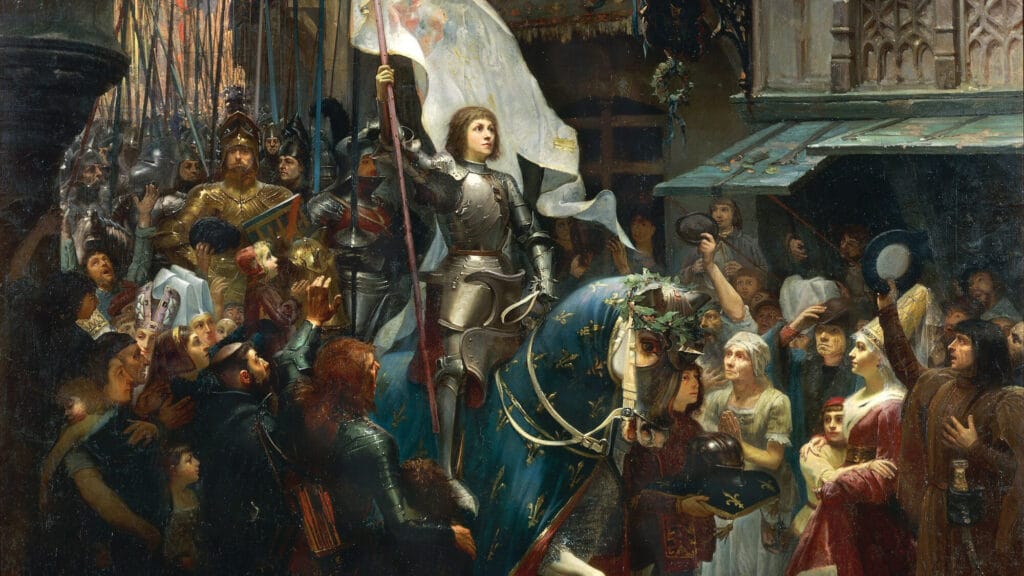
Feminist Interpretation of Joan’s Life
Defiance Against Patriarchal Structures
From a feminist perspective, Joan of Arc’s story is one of defiance against patriarchal structures and gender norms. Her life and actions disrupted the traditional roles assigned to women, showcasing their potential to lead, inspire, and enact significant change. Joan’s insistence on her divine mission and her unwavering commitment to her cause, even in the face of death, exemplify qualities of autonomy, agency, and resilience that are celebrated in feminist discourse.
Joan’s trial and execution reflect the ways in which patriarchal societies punish women who step outside prescribed roles. Her wearing of male attire, a practical choice for her role and protection, was used to undermine her character and legitimacy. This focus on her clothing reveals the extent to which control over women’s bodies and appearances was, and still is, a mechanism of maintaining patriarchal power.
Joan as a Symbol of Female Empowerment
Joan of Arc’s legacy endures in contemporary feminist thought and activism. She serves as an emblem of the struggle against gender oppression and the fight for women’s rights. Her story is a powerful reminder of the potential for women to rise above societal limitations and make profound impacts.
Joan’s canonization as a saint in 1920 by the Catholic Church further solidified her status as a symbol of virtue and strength. Her sainthood, however, also complicates her legacy, intertwining her narrative with religious institutions that have historically played complex roles in women’s lives.
In modern times, Joan’s image has been embraced by various feminist movements as a symbol of female empowerment. Her courage and determination continue to inspire women to challenge existing power structures and to seek equality and justice.
Intersection of Faith and Feminism
Joan’s life also highlights the complex intersection of faith and feminism. Her unwavering belief in her divine mission challenges the notion that feminism and religion are mutually exclusive. Joan’s faith was a source of strength and empowerment, enabling her to challenge societal norms and pursue her goals with conviction.
Her story invites reflection on the ways in which faith can both support and constrain women’s agency. While religious institutions have often played a role in upholding patriarchal norms, individual faith can also be a source of empowerment and resistance. Joan’s life demonstrates the potential for women to draw on their faith as a means of challenging injustice and pursuing equality.

Joan’s Legacy in Modern Feminism
Inspiring Women in Leadership
Joan of Arc’s legacy has had a profound impact on modern feminism and the role of women in leadership. Her story serves as a powerful example of women’s potential to lead and inspire in fields traditionally dominated by men. Joan’s military achievements and her ability to command respect and loyalty from her troops challenge the notion that leadership is inherently masculine.
In contemporary society, women continue to face barriers to leadership in various domains, including politics, business, and the military. Joan’s example provides a source of inspiration for women striving to break through these barriers and assert their right to lead. Her life reminds us that women possess the qualities necessary for effective leadership, including courage, strategic thinking, and the ability to inspire others.
Challenging Gender Norms
Joan of Arc’s story also challenges contemporary gender norms and stereotypes. Her decision to wear male attire and take on a traditionally male role in the military defied the expectations of her time. In doing so, she demonstrated that gender is not a fixed or inherent quality but a social construct that can be challenged and redefined.
Joan’s life invites us to reconsider our assumptions about gender and the roles that women can and should play in society. Her example encourages us to support and empower women who choose to step outside traditional gender roles and pursue their passions and ambitions. In this way, Joan’s legacy continues to inform and inspire efforts to achieve gender equality.
The Role of Women in Religion
Joan of Arc’s life also has significant implications for the role of women in religion. Her deep faith and her claim to divine guidance challenge the traditional exclusion of women from religious authority and leadership. Joan’s example demonstrates that women can possess profound spiritual insights and play crucial roles in shaping religious and moral discourse.
In many religious traditions, women continue to face restrictions on their participation and leadership. Joan’s story provides a powerful counter-narrative, highlighting the ways in which women can contribute to and transform religious life. Her life encourages us to support efforts to expand women’s roles within religious institutions and to recognize the value of their spiritual contributions.
The Symbolism of Joan in Feminist Art and Literature
Joan of Arc’s story has been a rich source of inspiration for feminist art and literature. Her life and legacy have been explored and reimagined in various cultural works, each offering new insights and interpretations. These representations often reflect contemporary concerns and values, showcasing the enduring relevance of Joan’s story.
In literature, Joan has been depicted by writers such as George Bernard Shaw in his play “Saint Joan” and by Mark Twain in his novel “Personal Recollections of Joan of Arc.” These works explore different aspects of Joan’s character and her significance, highlighting her courage, intelligence, and moral conviction.
In visual art, Joan has been portrayed in numerous paintings, sculptures, and films. These representations often emphasize her strength and determination, capturing her as a symbol of female empowerment and resistance. By engaging with Joan’s story, feminist artists and writers contribute to the ongoing dialogue about gender, power, and justice.
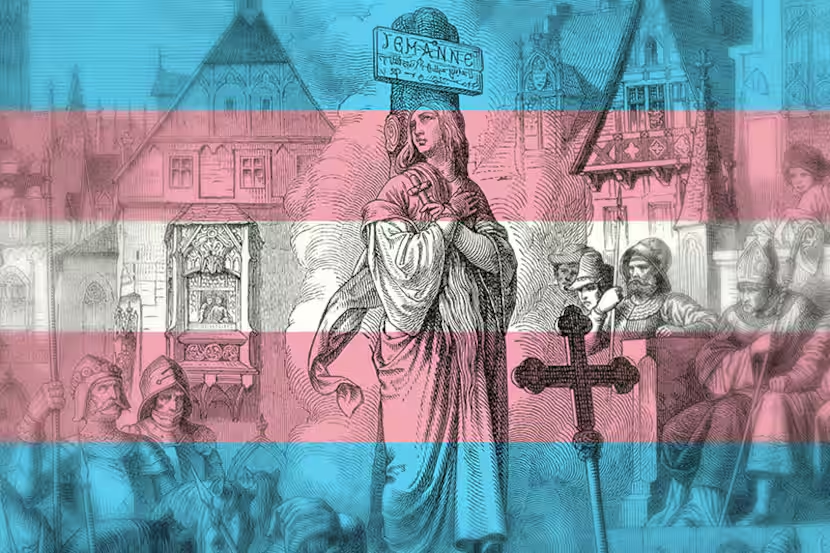
Philosophical Reflections
Gender, Power, and Societal Norms
Joan of Arc’s life prompts deep philosophical reflections on the nature of gender, power, and societal norms. Her story challenges essentialist views of gender that posit fixed roles and capabilities for men and women. Instead, Joan’s life illustrates the fluidity of gender roles and the capacity of individuals to transcend societal expectations.
Joan’s trial and execution highlight the mechanisms through which societies enforce conformity and punish deviation. The charges against Joan, particularly those related to her clothing, underscore the ways in which patriarchal societies police gender boundaries and seek to control women’s bodies and identities.
Her steadfastness in her beliefs, even unto death, raises questions about the nature of conviction, faith, and resistance. Joan’s life invites reflection on the moral and ethical dimensions of resistance to unjust authority and the role of personal integrity in the face of persecution.
The Ethics of Resistance
Joan of Arc’s life also prompts philosophical reflections on the ethics of resistance. Her decision to defy societal norms and challenge established authorities was driven by her deep sense of divine mission and moral conviction. Joan’s life raises important questions about the conditions under which resistance to authority is justified and the ethical implications of such resistance.
Her story encourages us to consider the role of individual conscience in confronting injustice and the ways in which personal beliefs can motivate actions that challenge oppressive systems. Joan’s life demonstrates the potential for individuals to effect change through acts of courage and defiance, even when facing significant risks and opposition.
The Intersection of Faith and Feminism
Joan of Arc’s life also highlights the complex intersection of faith and feminism. Her unwavering belief in her divine mission challenges the notion that feminism and religion are mutually exclusive. Joan’s faith was a source of strength and empowerment, enabling her to challenge societal norms and pursue her goals with conviction.
Her story invites reflection on the ways in which faith can both support and constrain women’s agency. While religious institutions have often played a role in upholding patriarchal norms, individual faith can also be a source of empowerment and resistance. Joan’s life demonstrates the potential for women to draw on their faith as a means of challenging injustice and pursuing equality.
Legacy of Martyrdom
Joan of Arc’s martyrdom has profound philosophical implications. Her willingness to die for her beliefs and her unwavering faith in her divine mission raise questions about the nature of martyrdom and its significance in human history. Joan’s life and death invite us to consider the ways in which martyrdom can serve as a powerful form of resistance and a means of inspiring others.
Her martyrdom also highlights the ways in which societies respond to those who challenge established norms and authorities. Joan’s execution was intended to serve as a warning, but it instead solidified her status as a symbol of resistance and moral conviction. Her life and death demonstrate the potential for martyrdom to transform individual acts of defiance into enduring symbols of justice and courage.

Joan of Arc in Cultural Memory
Joan in Literature and Art
The cultural memory of Joan of Arc is vast and varied. She has been the subject of countless artistic, literary, and cinematic works, each interpreting her story through different lenses. These representations often reflect the values and concerns of their times, showcasing the enduring relevance of Joan’s legacy.
In literature, Joan has been depicted by writers such as William Shakespeare, George Bernard Shaw, and Mark Twain, each offering unique interpretations of her life and significance. Shakespeare’s “Henry VI, Part 1” presents a complex and ambivalent portrayal of Joan, reflecting the political tensions of the time. Shaw’s “Saint Joan” offers a more sympathetic and nuanced interpretation, highlighting her courage and conviction. Twain’s “Personal Recollections of Joan of Arc” provides a detailed and admiring account of her life, emphasizing her heroism and moral integrity.
In visual art, Joan has been portrayed in numerous paintings, sculptures, and films. These representations often emphasize her strength and determination, capturing her as a symbol of female empowerment and resistance. By engaging with Joan’s story, feminist artists and writers contribute to the ongoing dialogue about gender, power, and justice.
Joan in Film and Media
Joan of Arc has also been a prominent figure in film and media. Her story has been adapted into various movies and television series, each offering new perspectives on her life and legacy. Notable films include Carl Theodor Dreyer’s “The Passion of Joan of Arc” (1928), which is renowned for its powerful portrayal of her trial and execution, and Luc Besson’s “The Messenger: The Story of Joan of Arc” (1999), which presents a more action-oriented depiction of her military exploits.
These films and media representations contribute to the ongoing cultural memory of Joan of Arc, keeping her story alive and relevant for contemporary audiences. They also provide opportunities for reinterpretation and reimagining, allowing new generations to engage with her legacy in meaningful ways.
Joan in Popular Culture
Joan of Arc’s influence extends beyond high art and literature into popular culture. She has been referenced and reimagined in various forms of popular media, including music, theater, and even video games. Her image and story continue to resonate with audiences, serving as a powerful symbol of courage, resistance, and female empowerment.
In music, Joan has been celebrated in songs by artists such as Leonard Cohen, whose “Joan of Arc” explores themes of faith and martyrdom, and Madonna, whose “Joan of Arc” reflects on strength and vulnerability. These musical tributes highlight the enduring impact of Joan’s story on contemporary culture and its ability to inspire and move people across different artistic forms.
In video games, Joan has been featured as a character in titles such as “Age of Empires II” and “Jeanne d’Arc,” reflecting her status as a historical icon and a figure of fascination for modern audiences. These representations contribute to the ongoing relevance of Joan’s story and its ability to inspire and engage people in diverse ways.



Joan of Arc’s Impact on Modern Women’s Lives
Role Model for Women in Leadership
Joan of Arc’s legacy has had a profound impact on modern women’s lives, particularly in the realm of leadership. Her story serves as a powerful example of women’s potential to lead and inspire in fields traditionally dominated by men. Joan’s military achievements and her ability to command respect and loyalty from her troops challenge the notion that leadership is inherently masculine.
In contemporary society, women continue to face barriers to leadership in various domains, including politics, business, and the military. Joan’s example provides a source of inspiration for women striving to break through these barriers and assert their right to lead. Her life reminds us that women possess the qualities necessary for effective leadership, including courage, strategic thinking, and the ability to inspire others.
Joan’s influence can be seen in the increasing number of women who have risen to prominent leadership positions in recent years. Figures such as Angela Merkel, the former Chancellor of Germany, and Jacinda Ardern, the Prime Minister of New Zealand, exemplify the qualities of strength, intelligence, and resilience that Joan embodied. These women, and many others, continue to challenge traditional gender norms and pave the way for future generations of female leaders.
Challenging Gender Stereotypes
Joan of Arc’s story also challenges contemporary gender stereotypes and encourages women to pursue their passions and ambitions, regardless of societal expectations. Her decision to wear male attire and take on a traditionally male role in the military defied the expectations of her time. In doing so, she demonstrated that gender is not a fixed or inherent quality but a social construct that can be challenged and redefined.
Joan’s life invites us to reconsider our assumptions about gender and the roles that women can and should play in society. Her example encourages us to support and empower women who choose to step outside traditional gender roles and pursue their passions and ambitions. In this way, Joan’s legacy continues to inform and inspire efforts to achieve gender equality.
Inspiring Activism and Social Change
Joan of Arc’s legacy has also inspired activism and social change. Her life and story provide a powerful example of resistance to oppression and the pursuit of justice. Joan’s courage and determination continue to inspire women to challenge existing power structures and to seek equality and justice.
In contemporary feminism, Joan’s example is often invoked in campaigns for women’s rights and social justice. Her story serves as a reminder of the importance of standing up for one’s beliefs and fighting against injustice, even in the face of significant opposition. Joan’s life encourages women to be active participants in the struggle for equality and to use their voices and actions to effect change.

The Power of Faith and Conviction
Joan of Arc’s life also highlights the power of faith and conviction in driving social change. Her unwavering belief in her divine mission provided her with the strength and determination to challenge societal norms and pursue her goals. Joan’s example demonstrates the potential for individuals to draw on their faith as a means of challenging injustice and pursuing equality.
In modern times, Joan’s story continues to inspire women to draw on their beliefs and convictions as sources of strength and empowerment. Her life encourages us to consider the ways in which personal faith and values can motivate actions that challenge oppressive systems and promote social justice.
The Ongoing Relevance of Joan’s Story
Joan of Arc’s story remains deeply relevant in contemporary society. Her life and legacy continue to inspire and inform discussions about gender, power, and justice. Joan’s example challenges us to reconsider our assumptions about women’s capabilities and roles, and to support efforts to achieve gender equality.
As we reflect on Joan of Arc’s life from a feminist perspective, we are reminded of the importance of courage, conviction, and resistance in the face of oppression. Her story serves as a powerful reminder of the potential for individuals to effect change and to challenge existing power structures. Joan’s legacy continues to inspire and empower women around the world, providing a timeless example of strength, resilience, and the pursuit of justice.

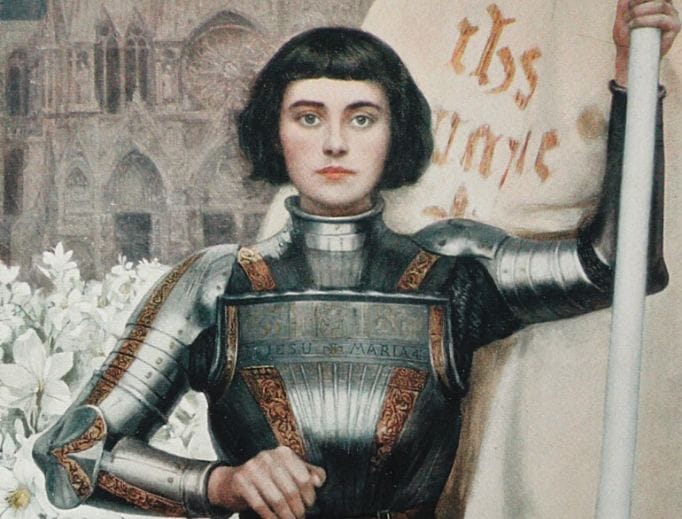
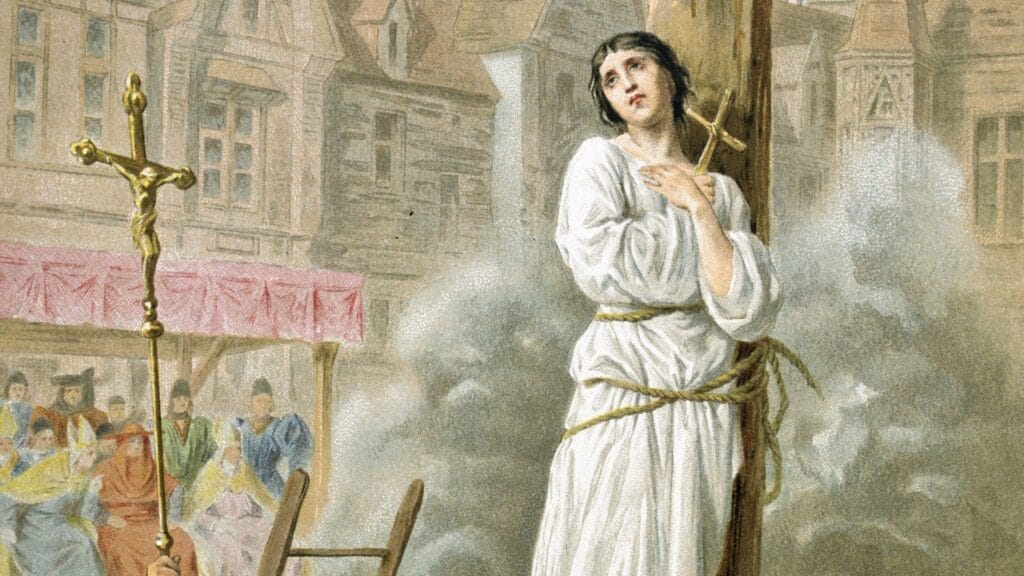
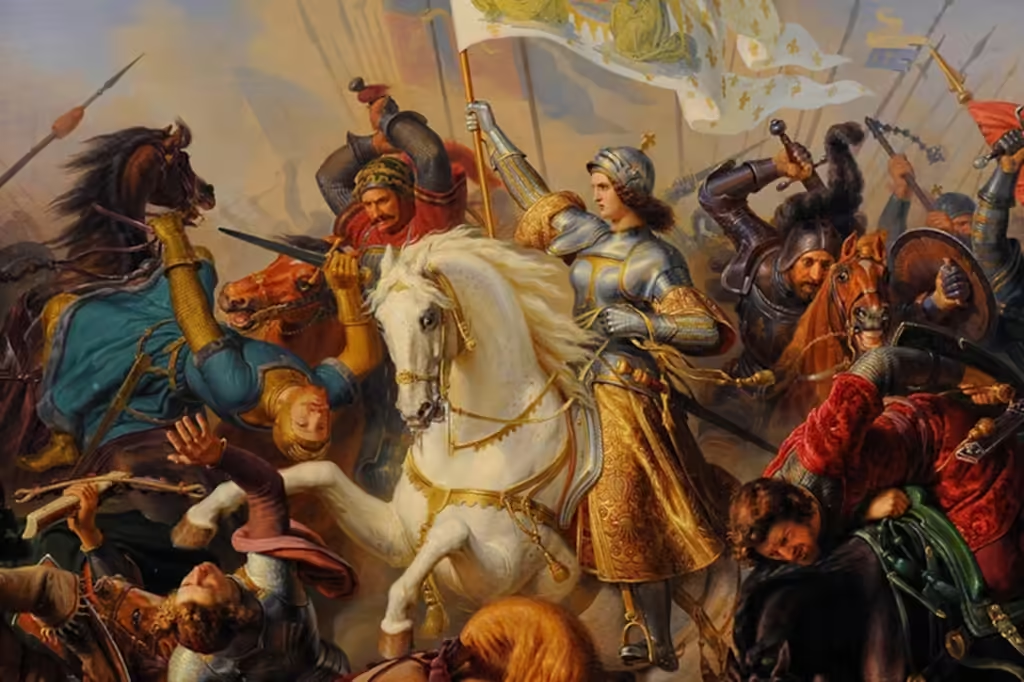
Conclusion
Joan of Arc’s story is one of defiance, courage, and profound faith. Her life and legacy continue to resonate deeply within the feminist movement, offering a rich narrative that challenges traditional gender roles and highlights the complexities of power, faith, and social norms. From her remarkable military achievements to her trial and execution, Joan’s life provides a powerful example of resistance to oppression and the pursuit of justice.
Through a feminist lens, Joan of Arc’s story invites us to reconsider our assumptions about gender and the roles that women can and should play in society. Her legacy continues to inspire and empower women to challenge existing power structures, pursue their passions, and strive for equality and justice. Joan’s life serves as a timeless reminder of the potential for individuals to effect change and to stand up for their beliefs, even in the face of significant opposition.
In contemporary society, Joan of Arc’s legacy remains deeply relevant, providing a source of inspiration for women in leadership, activism, and social change. Her story challenges us to support and empower women who choose to step outside traditional gender roles and to recognize the value of their contributions to society. As we reflect on Joan’s life and legacy, we are reminded of the importance of courage, conviction, and resistance in the ongoing struggle for gender equality and social justice.





